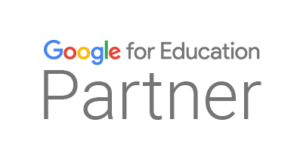The morning bell rings but the classrooms remain empty. Outside, the air is thick and heavy, the sky is grey, and the air quality meter flashes another warning. Across Delhi and many other cities, this scene has become a seasonal routine. Every winter, schools are left asking the same question again and again. Should we open or should we close? Will this high pollution days ever stop to exist?
But what if schools never had to ask that question again? What if learning could continue safely, even when the air outside was unsafe to breathe?
When the air outside stops learning inside
Air pollution has quietly turned into one of the biggest disruptors in modern education. Each year, thousands of students lose weeks of classroom learning when pollution levels spike. Government directives often require temporary closures, forcing schools to stop in-person classes.
The result goes far beyond missed lessons. Students lose focus and continuity. Teachers rush to finish their syllabus once schools reopen. Parents struggle to balance health and academic progress. Learning does not simply pause. It falls behind.
And yet, within this challenge lies a new possibility. The power of hybrid learning.
The hybrid advantage when learning adapts instead of stopping
Hybrid learning is the bridge between traditional and digital education. It blends in-person teaching with online experiences so that learning never has to stop. When pollution levels rise, schools can move classes online for a few days without losing connection or continuity.
This is not about emergency online classes that feel temporary or unplanned. It is about building a flexible and guided learning model that adapts to every situation.
Schools that have already made this shift are seeing real benefits. Attendance remains consistent. Teachers stay connected with students through virtual classrooms. Learning outcomes stay on track even when school gates are closed.
High Pollution days has changed the reason to rethink school infrastructure
Until a few years ago, hybrid learning was seen mainly as a response to natural disasters or distance challenges. The pandemic made it mainstream. Now pollution has become another reason for schools to adopt it seriously.
To stay ready, schools must look beyond installing air purifiers or issuing safety notices. They need to create a digital foundation that supports learning in any condition.
This means –
• Preparing lesson plans that can easily move between physical and virtual settings.
• Providing access to digital devices and online resources to all students.
• Training teachers to handle both environments with equal ease.
• Building a strong technology backbone that supports classes and assessments without disruption.
When these systems are already in place, a school can switch to remote learning in minutes when the air becomes unsafe.
How to build a pollution ready hybrid classroom
A successful hybrid model does not appear overnight. It evolves through planning, preparation, and practice. Here is how schools can get started.
1. Start with a clear plan before choosing any tool
Many schools begin by buying software or devices first. The better approach is to identify your biggest challenges such as attendance gaps or teacher readiness, then choose the right technology to solve those issues.
2. Train and support your teachers
Teachers are at the heart of every successful hybrid classroom. Short workshops on digital teaching methods, time management, and online engagement can help them balance both formats smoothly.
3. Ensure equal access for all learners
Not every student will have a personal laptop or stable internet. Schools can offer flexible solutions such as recorded lessons, offline content, and shared devices so that no learner is left behind.
4. Secure your digital space
As online learning becomes frequent, schools must protect their systems and data. A secure and well-managed digital setup keeps operations safe and uninterrupted.
5. Communicate clearly with parents and students
Parents are key partners in hybrid learning. Keeping them informed about schedules, safety plans, and available support builds trust and confidence during transition periods.
Learning that continues through every crisis
Hybrid learning is no longer an emergency fix. It is the future of flexible and resilient education. Pollution, heatwaves, floods, or any other crisis can disrupt traditional schooling, but hybrid learning allows schools to stay open in every sense of the word.
It also opens creative opportunities. Imagine students studying environmental science with real-time air data collected from their surroundings. Imagine teachers conducting virtual parent meetings without scheduling stress. The hybrid model not only sustains learning but also enriches it.
A future that keeps learning alive
As pollution continues to challenge cities across India, schools must look beyond short-term solutions. Hybrid learning is not about technology alone. It is about rethinking the way we teach, connect, and grow.
By mastering the hybrid learning playbook, schools can continue classes without interruption, maintain student engagement, and ensure safety at the same time.
This is the kind of resilience that every modern school needs. Because education should never wait for the air to clear.
When learning is designed to adapt, it can breathe through any crisis.




 1st Floor, H-31, Sector 63,
1st Floor, H-31, Sector 63,